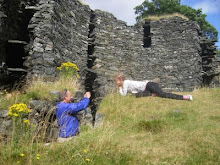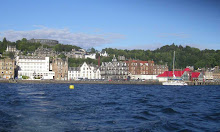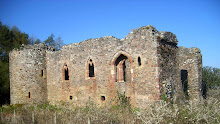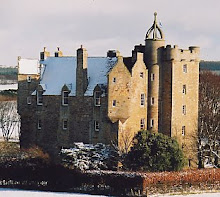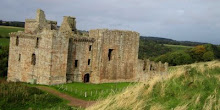On Friday night I was at the
Sligachan Hotel on the Isle of Skye, enjoying a pint or two of
Skye Ale, a fine brew, made on the premises. The brewery is new, but there has been drinking on this site since the first Sligachan Market was opened by Col MacLeod of MacLeod on 22 October 1794. This was a traditional 'drovers stance', where about 6,000 cattle were assembled each year, to be sold on to the drovers who would swim them across to the mainland and drive them on to markets in the south. The new Sligachan market attracted a multitude of folk - tacksmen, drovers, cottars, tinkers, factors, ghillies, all enjoying a chance to meet and trade and brag and drink against the backdrop of the noise and stench of cattle, sheep and Skye ponies (sold to work in the Lanarkshire coalfields) all of them unsettled at leaving their home turf.

But now the inn is distinctly civilised. On Saturday it was full of nervous Englishmen, curtailing their climbing to see if England could survive in the Rugby World Cup (they did). I was there with an ex submarine commander friend, for a day's walking in the Cuillins (seen above on a perfect evening last month). All week the weather forecast showed an unusual full sun icon for Saturday, but we set out for Sgurr nan Gillean on a misty wet morning (see October's picture). The day improved and there were some great views over to Raasay and up to Portree and the 'Old Man of Storr'. But the clouds drifted over the tops and we did not feel competent to press on to the famous Cuillin Ridge. It was a thoroughly enjoyable, if exhausting, day. This was about as high as we got (the more rounded 'Red Cuillins' are in the background)...
















































